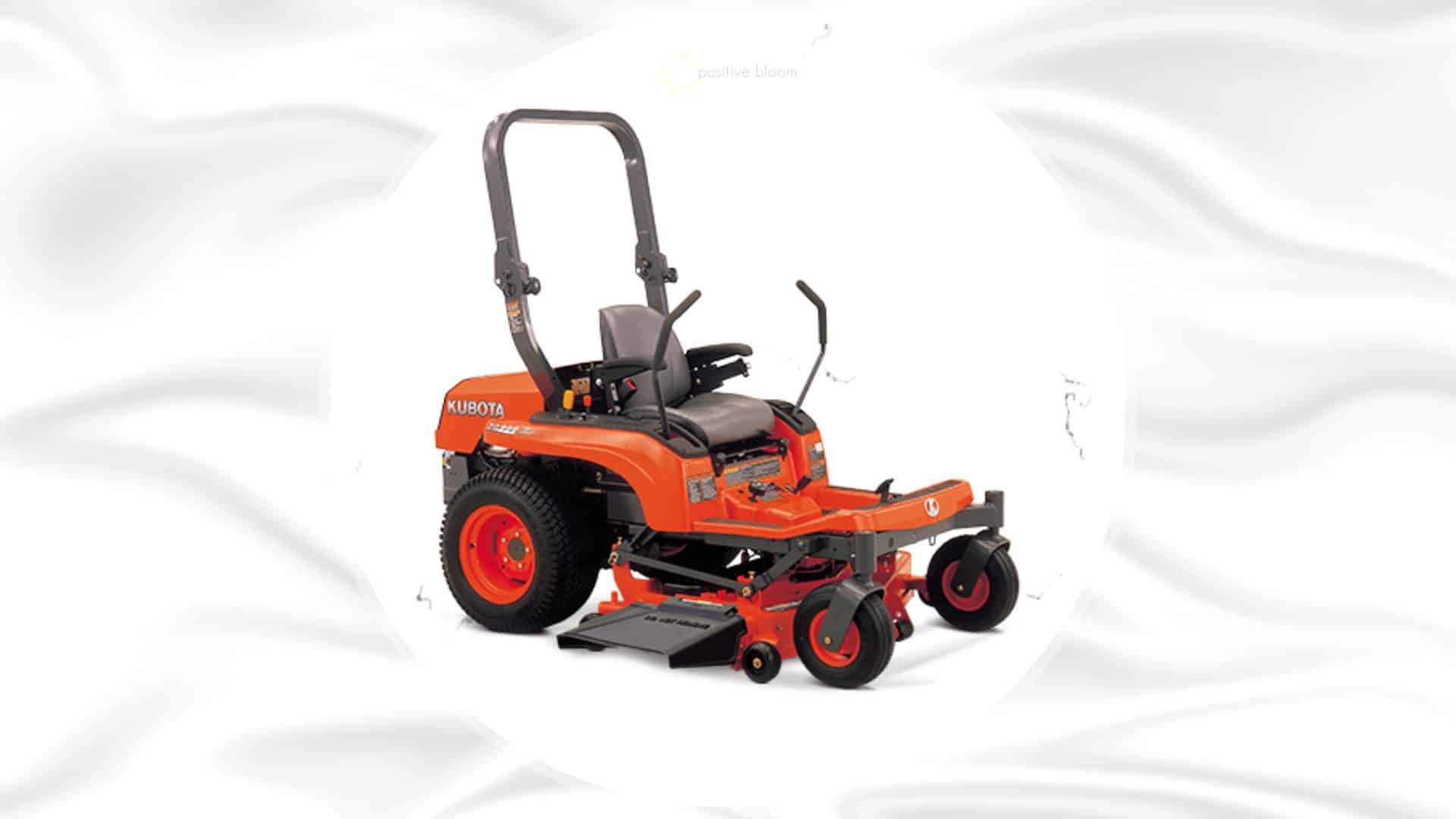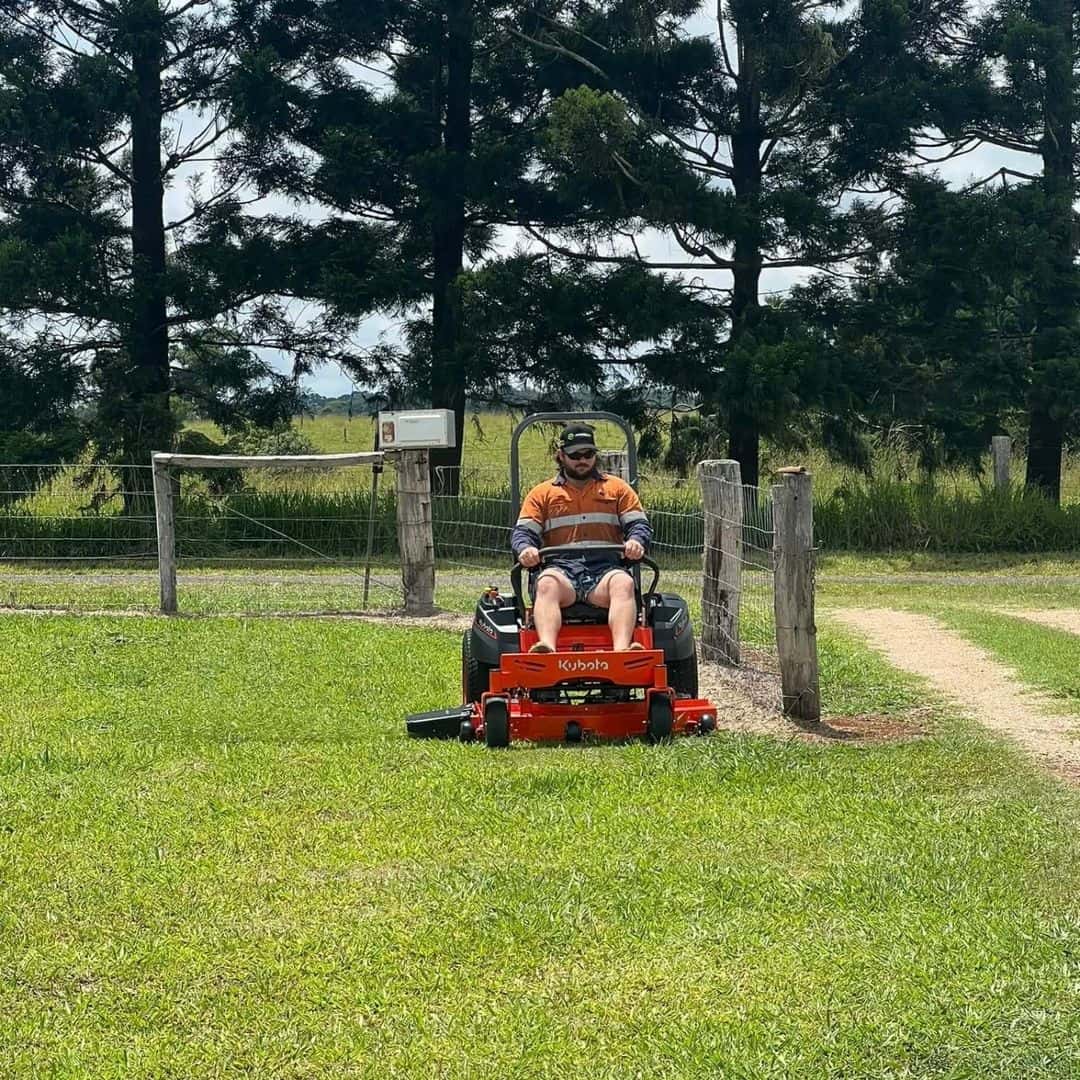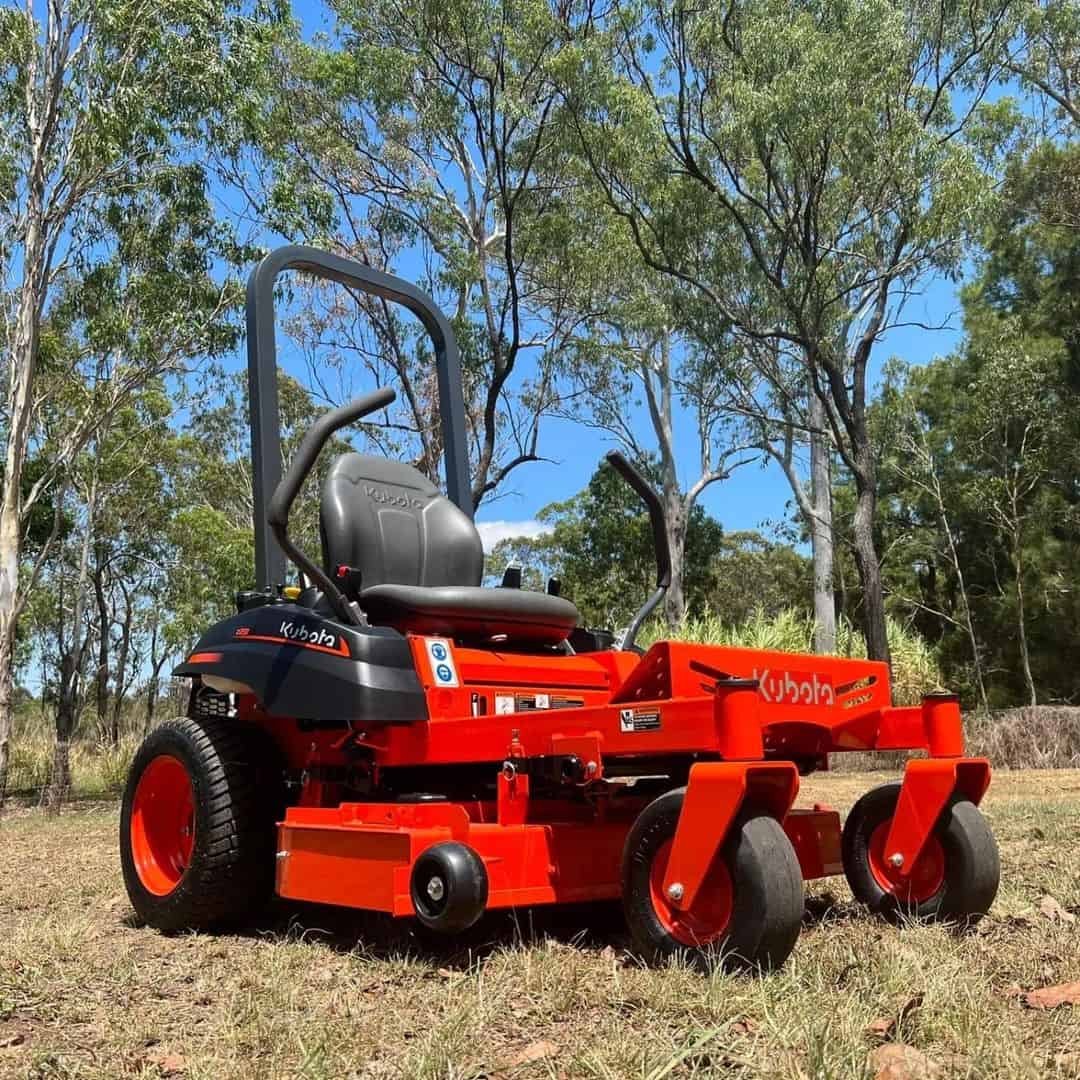Maintaining a healthy lawn can sometimes be quite difficult, especially if you live in an area with fast-growing grass types. You will end up mowing your lawn every other weekend, which is much harder if you have a lawn mower that breaks down all the time!
This is why investing in a good mower will make your job a lot easier, and you will think of mowing your lawn as a pleasant task to do early in the morning.
When you are spending a lot of money on something, you have to make sure that you get a mower of the highest quality. Gardeners often turn to Kubota zero-turn mowers as they are produced by a Japanese company that has been in the business for a long time. They are effective, reliable, and expensive!
However, they are not perfect — you can still face some issues even after you have bought the best of the best. Today, we are going to talk about the most common Kubota zero-turn mower problems.
If you are considering getting one, read this before you part with your hard-earned money!
Kubota Zero Turn Mower Problems
Kubota lawn mowers are getting relatively popular nowadays. They are produced by a brand that has been in the business for quite some time now. Kubota offers zero-turn mowers with a choice of engines ranging from 19 to 32.5 horsepower, and deck widths from 43 to 72 inches. These mowers are fast and easy to handle, and they ultimately get the job done.
The catch is that Kubota are quite pricey, with some of their tractors costing over $30,000!
When it comes to the mowers, they cost a bit less. However, you will still have to spend several thousand dollars for a good Kubota mower. So, before spending all that money, you should get familiar with all features.
We are now going to discuss the common problems that you might have to deal with.
1. Uneven Cut
Grass having uneven cuts and track marks is a bothersome and typical issue. This is also one of the common issues with Spartan mowers.
The typical causes of uneven cuts are obvious: using blades that are worn, broken, or dull, mowing too quickly, and not overlapping. As well as dull blades, the causes can also be damaged deck shells, blades not installed properly, or a clogged deck with grass clippings.
To ensure that you have cut every blade of grass, you should slow down, overlap rows, and change or sharpen the blades.
You will quickly start enjoying your newly renovated lawn by adjusting the cutting height to the terrain. However, there are a number of other factors that affect cut quality, so if you notice that one side is cutting more or less than the other, you should also check the tire pressure to make sure it’s the same on both sides.
Ensure that everything is properly installed and clean the mower blades regularly.
2. Starting Problems
Your lawnmower not starting is among the worst situations you could face. The most important thing is to remain calm and give it a thorough examination.
The most common causes of this issue include fuel tank clogging, bad electrical connections, clogged air filters, and faulty charging systems.
The battery and fuel levels should be checked first; your mower won’t start if the gasoline tank or batteries are empty. Fill up the tank, charge the battery, and if the problem persists, look for other faults.
If the battery is weak and failing, you might need to replace it, but you must never let it discharge. You should remove the battery from your mower and store it in a warm location if you won’t be using it for an extended period of time (such as throughout the winter), and if you have a battery tender, use it!
While you’re at it, remember to check the connectors. Like rusted and weak connections, broken or frayed wires pose a threat and won’t convey enough electricity. Don’t forget to check the spark plugs, replace any worn-out wires, and tighten any loose connections.
You should examine the carburetor and clean it using a carburetor cleaner if the gasoline tank, battery, and other components are all full and functional. If it doesn’t work, manually clean it.
3. Overheating
The most common complaint by Kubota customers is that the mower overheats frequently. Overheating issues are usually caused by blocked filters. This is because the filter gets clogged with dust and grass after it has been used a couple of times.
This type of blockage can lead to radiator damage, which is a far more serious issue, especially if there is leakage from the radiator. Therefore, you should regularly check and replace the filters if they get clogged.
4. Scalping
When the mower’s deck isn’t properly installed, that is, if it strikes the ground, it will cut the grass at its growing point. An improperly leveled deck can create an uneven cut and brown patches on the lawn.
It will take some time for the grass to recover from scalping. Some grass types might recover faster, while others can take weeks until they start growing again.
Other issues that might cause scalping include a deck that’s too-low, uneven tire pressure, an uneven lawn, and ground speed that’s too fast.
5. Step Cut
Step cut happens when the surface of the lawn has sharp ridges on it after mowing. Imagine spending all that time and energy cutting your lawn, just to end up with an uneven cut or a step cut! Step cut occurs primarily due to severely damaged blades, an inadequately leveled deck, blades and tires not being installed properly, and a damaged mower spindle.
Check to make sure that your deck is level, your blades are undamaged, your mower spindle and deck shell are in good shape, and your tires are adequately inflated to prevent stepped cutting. You shouldn’t experience any future step cuts if you adhere to these instructions.
6. Transmission Issues
Hydraulic transmission problems are also one of the most common issues reported in customer reviews. This is also a frequent issue with the Ferris zero-turn mower.
Hydraulic transmissions are primarily used to reach higher acceleration. However, this system is fragile and needs constant upkeep, such as replacing the hydraulic fluid regularly. If there are any leaks in the system, air may enter and slow down the mower until it eventually stops. The likelihood of a sudden blockage in your zero turn mower increases with hydro drive component failure.
If the ground is muddy or damp, drive softly over the grass instead of mowing. Instead of driving up or down, utilize the sideways position to lessen the likelihood of hydraulic transmission failure.
I would suggest that you avoid cutting wet grass, which can damage both your lawn and the mower.
Changing the fluid can also be troublesome. I would suggest watching this video:
7. Handles Too Stiff
Investing in a good mower isn’t all about getting that even cut. It is also about comfort — you will have to get something that is comfortable, especially if you will be mowing the lawn every other week.
Some customers have complained that the handles are too stiff, and some senior citizens cannot operate the mower at all!
8. Streaking
When the mower leaves short, uncut grass strips in its path, streaking occurs. This is usually caused by rusted blades, a clogged deck, slow engine speed, or cutting rows not overlapping.
Cleaning your mower, properly overlapping, mowing at the proper speed, and making sure your blades are sharp can all help minimize lawn mower streaking.
9. Issues With Fuel Line
If your mower has some issues with the engine right after you’ve bought it, then there is probably something wrong with the fuel line. If it seems as though your mower is using more power than it should be, you should immediately check with the dealer to get to the bottom of this issue.
In some scenarios, there can be undissolved parts in the fuel line.
10. Wheels Not Turning
Drive belt wear and worn-out wheels are the two main causes of this problem.
The drive belt will break or continually come off if it is loose or worn, which will result in problems like a slow-moving mower or the mower not moving at all.
Since zero turn mowers use rear-wheel drive, the drive belt is located on the mower’s transaxle, which is mounted on the back wheels. Verify that the belt is on the pulleys and that it is sufficiently tight. You should get a new belt if the old one is worn out.
Inspect the wheels if the belt doesn’t appear to be the issue. If the gears on your wheels become worn out, you should replace them.
How To Keep Your Mower In Good Condition
Maintaining your mower properly will help it last longer.
This includes giving your lawnmower routine cleaning, periodically checking the oil and fuel, and being cautious with how you store it.
Let’s look closer.
Check The Oil
Checking and refilling the engine oil, adding more grease to the parts that need it, and topping off the hydro oil are all crucial parts of maintaining your mower and extending its lifespan.
Every time you use your lawn mower, check the oil. You should also use lubricant after every 25 hours of use, replace the engine oil every 50 hours, and replace the hydro oil every 400 hours.
However, you should change the hydro oil in a new lawn mower after the first 100 hours and then every 400 hours thereafter.
Clean The Mower
Cleaning your mower as frequently as you can is crucial. Simply cover all the electrical components to protect them from moisture when washing it. After letting the mower dry, oil all the necessary components.
After 25 hours of use, clean the deck and the engine cooling fins. The battery cable can be cleaned every 100 hours, and the spark arrestors every 50 hours. Finally, everything should be fine if you clean the cutting deck’s undersides once every 400 hours.
Store The Battery
You must take care of the battery to extend its life, or you will have to purchase a new one each year. When not using the mower, you should be careful with how you keep it.
When preparing for the winter and anticipating not using the mower for a few months, you should unplug the battery and keep it in a warm location to prevent significant charge loss.
A battery tender can be used to extend its life and keep the charge so that it will be ready when spring arrives.
Store The Mower
When not in use, the mower must be stored carefully to prevent damage from the sun and rust and corrosion from the rain.
Keep it in a garage or another protected area where the elements won’t affect it. Over the winter, keep the mower inside a shed or garage to prevent damage from snow and cold.
Check The Fuel
It’s crucial to check the fuel because it can go bad if the mower isn’t used for an extended period of time.
Fortunately, you can forget about issues with old gasoline by purchasing a fuel stabilizer from Amazon.
Check The Tire Pressure
Check to see if the air pressure in both tires of your lawnmower is the same before using it. If one of your tires has a minor loss of air pressure, you won’t get a clean cut.
Check The Air Filter
Your mower may have trouble starting if your air filters are clogged, primarily because the fuel may burn less efficiently than usual.
Like the gasoline filter, the air filter can be cleaned or replaced using a similar procedure: unplug the cables, remove the filter, and decide whether it needs to be cleaned or replaced.
The filter can be thoroughly cleaned with warm water and soap, just let it air dry and then replace it in the mower.
To Sum Up
The above mentioned Kubota zero-turn mower problems aren’t extremely troublesome. I am sure that you aren’t expecting too many issues when you spend a lot of money on a machine, but unfortunately, that’s never completely true.
After you have used the mower for a long period of time, you will definitely run into some issues despite its price and durability.
In my opinion, Kubota zero-turn mowers are good mowers, and if you have enough money, I definitely recommend buying one. If you want to try other zero-turn mowers, then check out John Deere zero-turn mowers or Ferris zero-turn mowers.
That’s all, folks. I hope this article was helpful.
Until next time!





